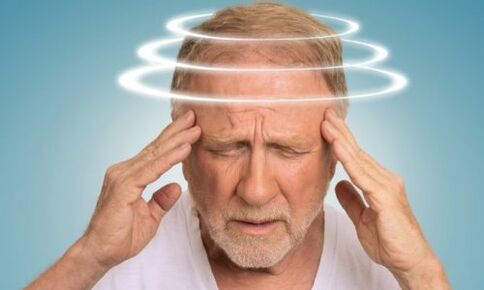Experts call the prostate gland the most vulnerable organ in men. The most common inflammation of the prostate, which causes a lot of discomfort to the patient. If the inflammatory process lasted longer than 3 months, we can talk about the chronic form of the disease. The problem of how to treat chronic prostatitis is faced by every third member of the stronger sex. The disease can be cured, but it will require qualified medical help. You should not delay the complex treatment of chronic disease, as it causes the appearance of adenoma and prostate hyperplasia, as well as impaired erectile function.

What is meant by diagnosis
Usually, men are not inclined to listen to their own well-being, so the inflammatory process in the prostate gland takes a protracted form. The danger of the disease lies in the fact that it can be completely asymptomatic. First urethritis develops and if you do not seek medical help, complications can be avoided. Over time, men develop chronic prostatitis, the symptoms and treatment of which are individual. Forms of chronic prostatitis:
| Name | Diagnosis |
|---|---|
| Infectious | It occurs due to damage to the prostate by viruses, fungi or bacteria. It is detected by laboratory analysis of blood and urine. |
| Stagnation | It is accompanied by pain in the pelvis, most often chronic. Symptoms of a congestive form sometimes resemble the signs of an inflammatory process. |
| Asymptomatic | There are no clinical manifestations of the inflammatory process, which is why men may not consult a doctor for a long time. The disease can be identified only by examination of the prostate gland. |
Many men have been diagnosed with chronic prostatitis (non-infectious etiology). In this case the inflammation affects the secretions of the prostate and veins.
Reasons for appearance
The causes of chronic prostatitis are various:
- Prolonged abstinence from intimate relationships or a very active sex life;
- The presence of several lesions of the perineum (during navigation or cycling);
- Irrational menu (lack of nutrients and excessive amount of fried, fatty and smoked foods);
- Recurrent infection of the genitals;
- Reduced immunity;
- Diseases of the urogenital organs;
- Inactive and lifeless lifestyle;
- Very tight and tight underwear;
- Termination of coitus;
- Phimosis in history;
- Anal sex without additional protection (condom).
The disease affects the elderly as well as middle-aged and young men:
- With an inactive sex life, prostatitis occurs due to stagnation of prostate secretion.
- Athletes are at risk because they are gaining weight and are prone to microtrauma to prostate tissue.
- Long-distance flight drivers experience blood stagnation in the pelvic organs.
- Winter fishing fans are at risk due to constant hypothermia of the body.
Among the common diseases of men, chronic prostatitis is about 20%. Every fifth patient who sees a doctor suffers from a chronic form of the disease. The disease "rejuvenates" because modern boys are depraved and do not think about their own safety. In order not to be surprised at how to get rid of chronic prostatitis, it is enough to take care of basic protection from sexually transmitted diseases.

It is worth considering that the chronic form of the disease causes a disorder of the erection of the penis and a decrease in sexual satisfaction during ejaculation. On this basis begins the fear of intimacy, irritability, self-doubt. All of this subsequently leads to neuroses on mature grounds.
Ways of infection
Doctors point to two ways of infecting the infectious form of prostatitis:
- Diuretic (ascending). Specific microorganisms enter the prostate through the urethra. The secretion of the prostate gland is usually sterile, the examination does not reveal any bacteria. There are cases when microorganisms live in the male body, but their concentration is not sufficient for the development of the disease. If the microflora is disrupted, infection of the body begins, leading to the development of inflammation. Do not rule out the risk of infection and damage to neighboring organs when a man suffers from hemorrhoids or cystitis. In this case, dangerous microorganisms enter the prostate lymphogenically.
- Hematogenous. The causative agent enters the prostate through the bloodstream. Diseases that can provoke this type of infection are diverse: acute influenza, caries, etc. Sh. If venous edema in the prostate gland occurs at the same time, there is a high risk of developing chronic prostatitis, which will take a long time to treat.
Urologists distinguish two predisposing factors that cause hematogenous infection:
- Თintended. Anatomical features of the prostate, including changes in the structure of muscle tissue or disorders of the circulatory system.
- Acquired. Causes of chronic prostatitis include genital trauma, craving for alcohol, prolonged smoking, a history of infectious diseases, and frequent hypothermia.
The danger of neglecting the disease lies in the fact that at this stage the symptoms of chronic prostatitis are most often absent or insignificant in men. The patient believes that the disease can be cured with the help of folk remedies, but these methods are ineffective. The treatment regimen is determined only by a specialist after a thorough examination and collection of the necessary information.
. Warning signs
Symptoms of chronic prostatitis vary according to the stage of the disease and its form:
| Jorma | Signs |
|---|---|
| Bacterial (infectious) | Feeling of weakness, chills, fever, muscle aches, pain in the lower abdomen (may be aggravated by sexual intercourse and prolonged abstinence), pain when urinating, weak air pressure during urination, frequent urination at night. Pain is observed in the thighs, perineum and rectum, which is why the signs of chronic prostatitis are mistaken for hemorrhoids. |
| Bacterial specific | All the above signs can be observed, to which may be added a mucus-like discharge from the urethra. |
| Bacterial | Ignoring the symptoms of congestive prostatitis is difficult because of the intense pain. Localized in the perineum and thighs. Discomfort is felt in the back of the penis. The pain is aggravated by the cessation of sexual intercourse, as well as prolonged abstinence from intimate relations. |
The consequences of chronic prostatitis depend on the duration of the disease:
- Adenoma;
- Oncology;
- Sclerosis of the prostate and bladder neck;
- Erectile dysfunction;
- Infertility;
- Decreased testosterone levels.
The danger of the disease lies not only in the fact that prostatitis can be confused with other diseases. If the acute phase passes, the symptoms of chronic prostatitis disappear and treatment is not carried out. Men no longer care about health and do not go to the doctor. However, there comes a time when the signs start to cause serious irritation and interfere with normal life, but the disease has already entered a protracted phase. Treatment of congestive prostatitis will take much longer if the disease was not diagnosed in the first stage.

Diagnosis
The symptoms of other diseases are very similar to the symptoms of chronic prostatitis. Is it possible to cure the disease without examinations? It is unlikely because only an accurate diagnosis can determine the form and stage of development of prostatitis. Discomfort can be caused by:
- Tuberculosis;
- Adenoma;
- Tumor.
Only a complete examination can confirm or rule out a diagnosis. There are two types of research:
- Instrumental;
- Laboratory.
After talking to the patient and taking a medical history, the urologist or andrologist will ask you to perform a series of tests:
- General urinalysis;
- General blood test;
- Analysis of prostate secretion;
- Blood test for PSA.
A urine sample is taken three times to get more accurate data on the change in its composition:
- Epithelial cells;
- Leukocytes;
- Pathogenic pathogens of infections;
- Nonspecific bacteria.
Doctors know what chronic prostatitis is and how difficult it is to diagnose. The modern method of transrectal ultrasound (TRUS) allows you to do exactly this:
- The device with the ultrasound probe is carefully inserted into the patient's anus.
- Since the prostate gland is tightly attached to the wall of the rectum, the specialist has a good opportunity to examine the prostate gland in detail and make an accurate diagnosis.
Conventional ultrasound allows you to determine the change in the density of the prostate, its size, the presence of fibrous foci, abscesses and stones.
The doctor should check the diagnosis twice before treating chronic prostatitis. In case of slight suspicion, he may refer the patient for an MRI or CT scan to rule out the presence of a tumor focus. If a man has infravesal obstruction, a radiograph will be needed to determine the cause of the disease.
Conservative treatment

The treatment regimen for chronic prostatitis is prescribed only by a professional urologist and is selected individually. The physician considers the cause of the disease, the duration of the disease, and factors such as aggravating pathology. If congestive or infectious prostatitis is in the early stages, treatment can be with medication:
- Antibiotic therapy. Prostatitis can be cured with antibacterial drugs if a bacterial agent is detected in the prostate secretion or urine. Inflammation should be pronounced. The course lasts no more than 2 months and the price of treatment for chronic prostatitis depends on the prescribed medication. The dose of each drug is prescribed individually, and self-medication is fraught with complications. Reviews after treatment of prostatitis with antibiotics are not always positive, but there are reasons for this. Sometimes the symptoms persist at the end of the course, however the infection is defeated.
- Eliminate symptoms. In men, medications that stop pain are often used to treat chronic prostatitis. A course of therapy may also include the use of antidepressants to reduce anxiety levels.
- Alpha blockers. A course of this medication is prescribed if your doctor has detected hypertension of the bladder muscles or an increase in intraurethral pressure. However, medications are ineffective if the patient has pelvic floor myodystrophy or impaired muscle innervation.
- Hormone therapy. It is conducted on the basis of the results of hormonal examination. Androgens and antiandrogens are used.
- Vitamin therapy. Irrational nutrition fills the nutrient deficit due to vitamin-mineral complex. Experts do not recommend replacing it with popular dietary supplements, as "booties" will not help in any way.
- Normalize uric acid levels. Methods of treating chronic prostatitis with the help of regulators are effective only in the presence of stones in the prostate gland.
- Immunostimulants. Prostatitis is treated in this way only in the case of laboratory-confirmed immunodeficiency.
On the question of whether chronic prostatitis is curable, we can confidently say that recovery comes quickly with a properly prescribed complex.
Surgical method of treatment
Typically, the disease does not require surgical intervention unless the complication poses a threat to the patient's health and even life. Modern surgery performs endoscopic interventions to reduce health risks and damage. The operation is irreplaceable:
- Adenoma;
- Seminal tuberculosis sclerosis;
- Stones in the prostate area;
- Prostate sclerosis.
Effective treatment of chronic prostatitis allows you to do without surgery if a man consults a doctor in a timely manner. Do not forget that surgical intervention is not possible in the stage of disease exacerbation. The need for such a cardinal method of treatment is determined only by the surgeon after studying the overall clinical picture.
Other treatments
Often men worry about whether it is possible to cure chronic prostatitis in a non-narcotic way. The doctor can really prescribe other methods:
- ᲛMassage. Do not forget about the contraindications and the fact that only a small area of the prostate is available for massage. If there are hyperplastic changes in the prostate gland, a course of massage may cause severe urinary retention. This, in turn, leads to further spread of inflammation and the development of sepsis. Massage is also prohibited in the presence of venous stasis, prostate cysts, and stones in the prostate gland. If you need to get rid of the stagnant secretion, it is best to release the prostate naturally through ejaculation.
- In special gymnastics. Used to strengthen the bladder and prolong the interval between urination. Improving the tone of the sphincter and bladder allows you to set a break between 5 hours between rushing to the toilet. Gymnastics is ineffective for neurodystrophic changes and myofascial syndrome.
- Muscle stimulation. Magnetotherapy, phonophoresis, transrectal ultrasound, or electrostimulation are used to reduce pelvic floor muscle tone.
- Instillation. It is practically not used in modern medicine, since the introduction of drugs into the urinary tract is accompanied by pain and does not cure prostatitis. The consequences of such treatment can be devastating.
It is more advisable to consult an andrologist or urologist on how to treat congestive prostatitis with folk remedies. Popular videos on the internet are full of videos about the quality use of alcohol tinctures and pumpkin seeds, but no method can replace drug therapy. How much to treat the disease is up to the doctor and not the YouTube characters.
Useful exercises
A simple set of exercises will improve blood microcirculation in the pelvic area. They can be performed in the morning, instead of the usual exercise:
- Straighten your legs shoulder width apart, raise your arms upwards and connect the back of your head. Inhale - Sit slowly and spread your knees to the sides, exhale - return to the starting position.
- Connect the legs together, lowering the arms freely along the body. Bend your left leg at the knee, lift it as high as possible. Repeat the same with the right foot. Run 10 approaches.
- Sit down, hands down. Inhale - Slowly raise, spread your arms out to the sides. Exhale - Return to starting position.
- Start on the abdomen, after placing a small ball (no bigger than a tennis ball) under it. Focus on the floor and roll the ball on the floor with your stomach. Run 7 approaches.
- Lie on your back, bend your knees. Pressing the ball between them. Exhale - press the elbows, exhale - relax. Do 3 sets, eventually increasing the number of repetitions by 9 times.
- Sit on the floor, focus on your hands. Place the ball under the buttocks. Try to roll it on the floor with the help of buttocks and genitals.
Help in the fight against the disease and Kegel exercises, which are useful not only for women but also for men.
Estimated forecasts
Instead of looking for information on how to live with chronic prostatitis, it is more helpful to make an appointment with a specialist. With timely access to a doctor and a course of reasonably selected therapy you can improve your health. The question of whether it is possible to completely cure chronic prostatitis can not be answered unequivocally. It all depends on what methods the doctor has prescribed and how accurately the patient follows his recommendations.
Experts are very careful in making predictions about the further course of the disease. Is chronic prostatitis treated with a guarantee? Complete recovery has been reported only in rare cases, as most often the disease progresses in the form of prolonged remission. Normalized urinary and blood counts, symptoms disappear completely. However, without a doctor’s advice, the disease can still cause discomfort and complications.




























